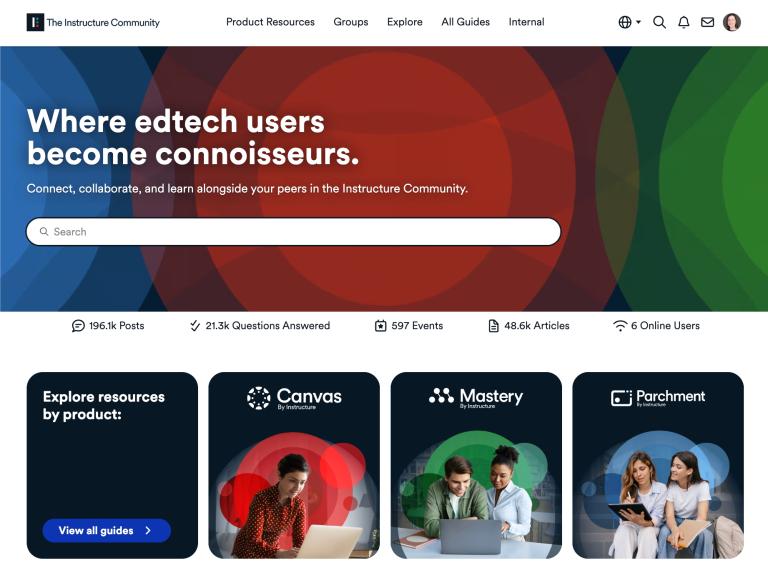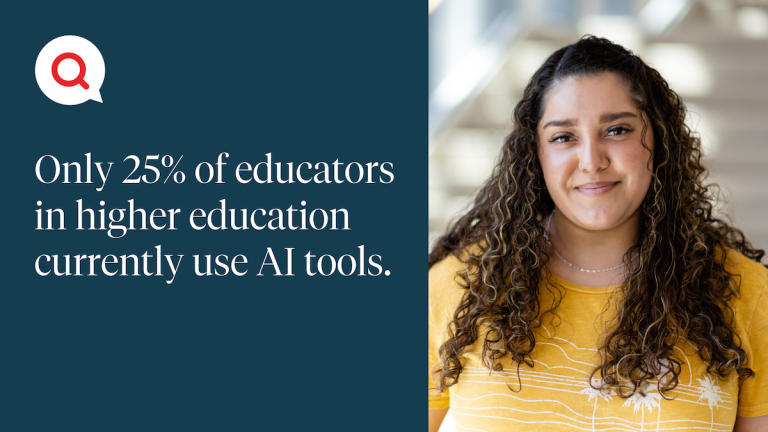This article is published in partnership with the Online Learning Consortium.
Instructure, the makers of Canvas LMS, worked with Hanover Research to field the 2023 State of Student Success and Engagement in Higher Education, a global survey in 17 countries. We asked 6,100 current students, administrators, and faculty from 2-year, 4-year, public, and private higher education institutions for their perspectives on the critical drivers of student success and engagement.
Across all regions, we found that student expectations for higher education come down to practical application, accessibility, and convenience. Take a look at the six key trends identified as most important to learners and educators today.
1. Skills-based learning is most sought-after for its practical application in the workforce.
As the workforce shifts and more jobs go remote, the need for students to demonstrate proof of skills to potential employers increases. Career advancement and the desire to learn new skills are most likely to influence students to pursue a skills-based learning opportunity, along with cost and program flexibility.
2. Certificates and apprenticeship programs are becoming highly valued by both students and employers for their demonstrable proof of workplace skills and upskilling/reskilling for lifelong learners.
Longer life expectancy, education costs, and changes in the workplace are driving a fundamental shift toward lifelong learning. More students are seeking skills-based learning opportunities to supplement their traditional degrees and ensure return on their educational investment. They’re not only considering certificates and apprenticeships for practical skills-building, but also for career readiness and advancement.
3. Schools need to provide consistent guidelines and training around generative AI, or risk a growing divide in skill development.
With only one-quarter of educators currently using them, AI tools have yet to be used consistently across institutions. Instead of hyper-focusing on AI concerns like cheating, educators should shift their focus to new assessment methods and productive uses of generative AI tools, such as course building. Otherwise, they risk losing tech-native students and an opportunity to prepare them for future jobs that will leverage advanced technology.
4. Access to technology has the greatest impact on student success and engagement, but we haven’t solved the accessibility gap for many learners.
As technology and education evolve, institutions risk widening the gap in accessibility for students with little or no access to technology, edtech tools, and reliable Wi-Fi or broadband connections. Students and educators say tools like learning management systems are being used to increase accessibility, but access to technology remains one of the biggest roadblocks for many students.
5. Students and educators value mental health resources, but want time off most.
The top mental health resource offered by institutions is in-person/virtual counseling, but what students and educators say they want most are personal/mental health days off to recharge. There also seems to be a misalignment in the resources institutions provide and students’ awareness of those resources, as a good portion of students report that their institutions do not provide any resources. This suggests an opportunity for institutions to provide students with better visibility to their mental health resources.
6. Educators feel most empowered when they are given autonomy, respect, and holistic support.
Today’s educators would like most for their institutions to offer additional personal development, acknowledge/award their achievements, and provide them with opportunities to give feedback. Educators feel most empowered by their institution when they are given autonomy and respect in their position and feel as though their physical and mental health is cared for.
Together, these trends suggest a need for greater ingenuity in higher education. Student success and engagement will hinge on the ability of higher education to readily meet learners where they are. Institutions can begin by creating consistency in embracing and leveraging edtech and AI tools, and offering more comprehensive personal and mental health support for both learners and educators. For more global insights, download the full study.
Related Content
 inst-3step.jpg
inst-3step.jpgBlogs
 13lmsfeaturesthatbenefitstudentlearning.jpg
13lmsfeaturesthatbenefitstudentlearning.jpgBlogs
 community-homepage.jpg
community-homepage.jpgBlogs

